And those trees on the lane? Hollyleaf Cherry, Prunus ilicifolia, California Coffeeberry, Frangula californica, and Christmasberry, Heteromeles arbutifolia, also called Toyon.
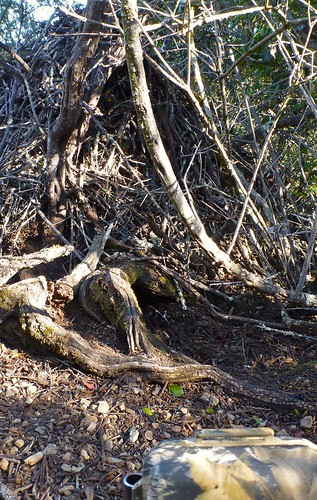
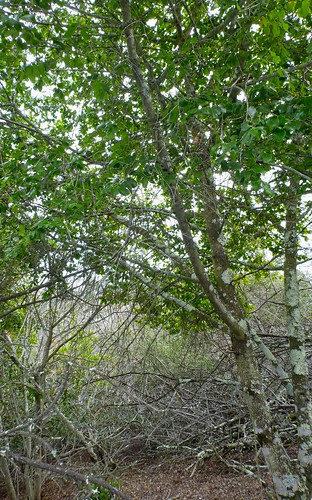
The house of Lady Prunus is in a cluster of toyon (that's the cam trap in the foreground), and right next to 2 big hollyleaf cherry, and several California coffeeberry
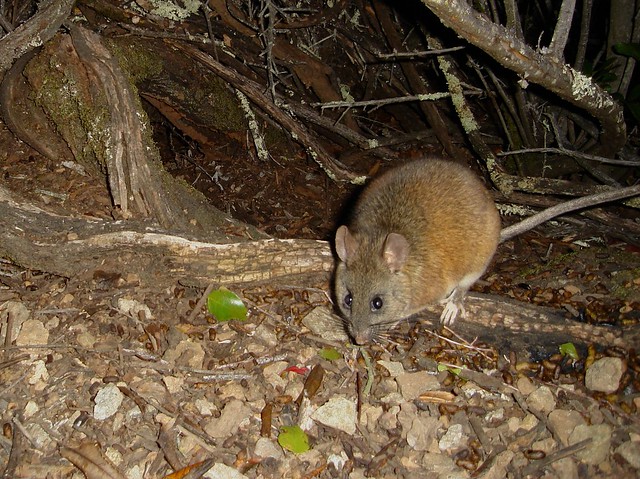
"May I help you?" Lady Prunus, sitting on her front porch, giving the camera a look-see. She seems a bit plump - I wonder if woodrats "show" when they're pregnant?
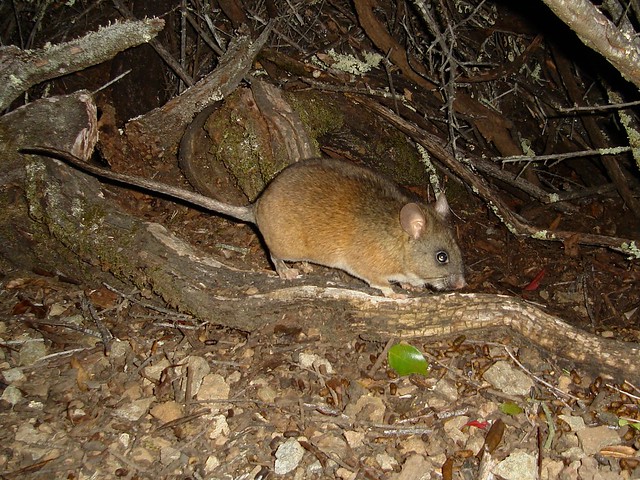
Heading out on some errands. She has a branch highway too (or root sidewalk?)

Coming back with a cuppa California coffeeberry
Now we know why she lives on Berry Lane. In fact, Neotoma fuscipes annectens is a herbie that will happily eat the leaves, buds and fruit of all 3 species, with toyon and coffeeberry being top foods. They also forage the foliage/fruits/seeds/acorns of live oak, bay laurel, willow, poison oak, blackberry, rose, elderberry, snowberry, soap plant, gold-back fern, and even the non-native European olive. Plus, they go after fungi, such as boletes, puffballs and brackets. In biologist speak, they're "generalist herbivores that specialize locally."
Notice that the core of their diet is some pretty tough and toxic stuff. But also note that many of those leaves come from evergreen perennial shrubs & trees - i.e., plants that are around all year, including in winter (woodies don't hibernate), and during harsh California droughts, when many annuals might not come up or survive. Smart.
And what about those toxins? Well, they have that well handled too. Not only are their complex guts rich in mutualistic protozoa that help detoxify many of the tannins and polyphenolics, but, they also "age" some leaves in their larders, to allow the toxins to reduce naturally, and make them more digestible. You know - like Tequila.
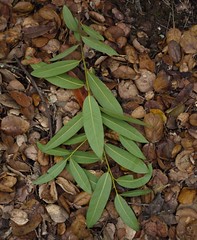
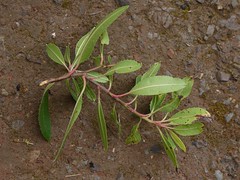
Woodrat forage sign. They climb up into the shrubs and trees, nip off branch tips, and then climb down and collect them (often over several nights) to stock their pantries back home (bay laurel, toyon, coast live oak and European olive)
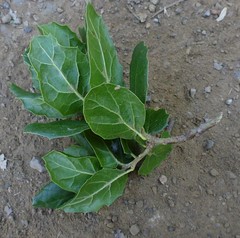

And when they forage, they prune. Which seems to have a beneficial effect on the shrubs - they branch more, and thus produce more flowers and fruit. Which is also good for pollinators, and birds, and, and, and...
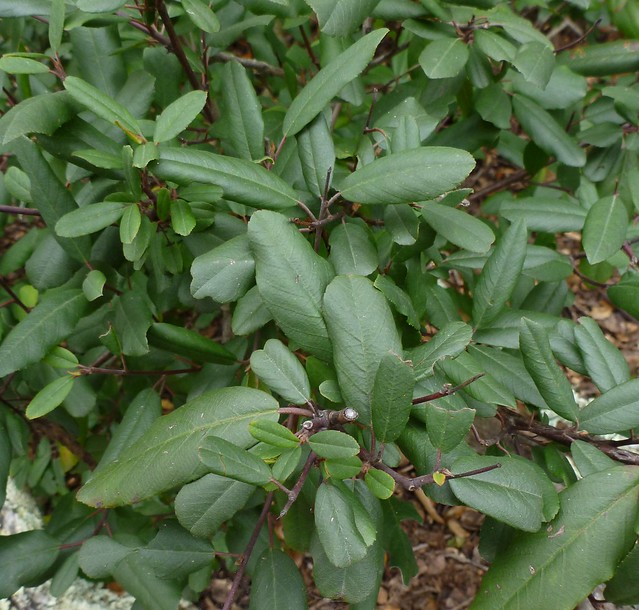
Coffeeberry pruned by a dusky-footed woodrat
If the shrub or tree is tall, the woodies will also clear out small internal branches to make it easier and faster for them to climb up and forage.
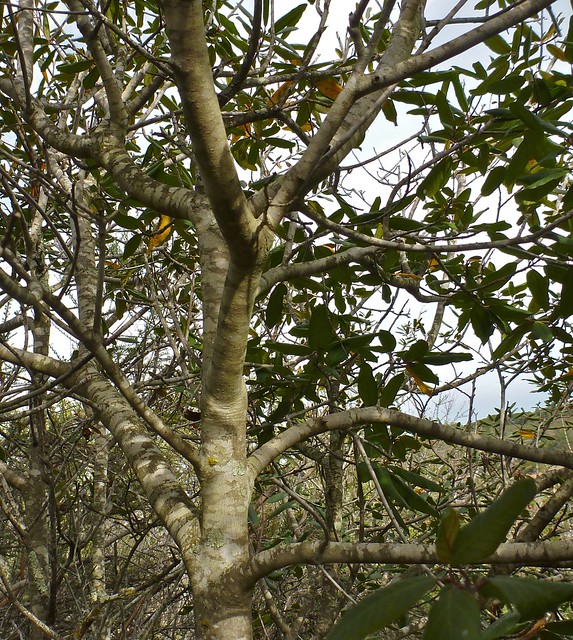
Coffeeberry next to Lady Prunus' stick house with nice, open interior for easy climbing
Master-class forest gardeners, the dusky-footed woodrats.
Lady Prunus also has several friends and suitors that visit her on Berry Lane...
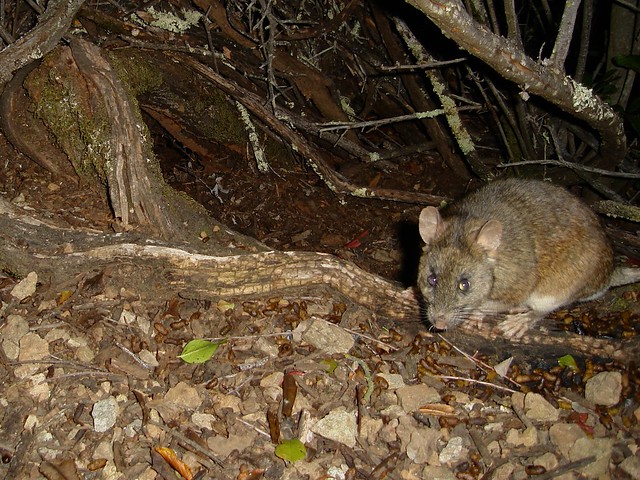
A male suitor or mate dropping by
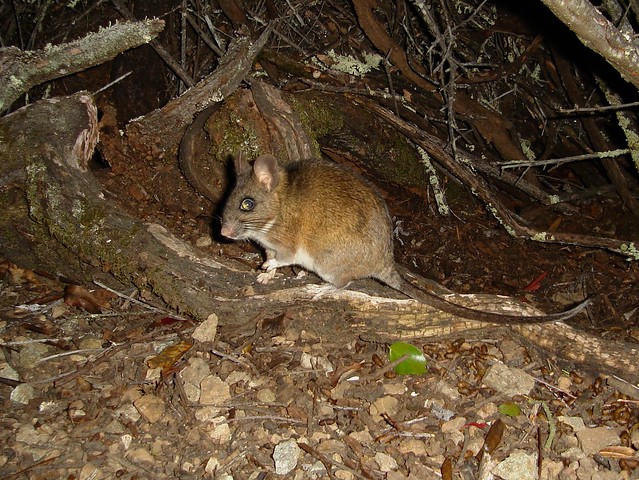
A female or young male popping in for a visit. She (I think) has the black eye ring of Mr. Most-Interesting. Perhaps they're related - they live less than 500 feet apart, and young woodrats will disperse that far when venturing out to find/build their first home
And, she's quite the popular landlady. Her house appears to be home to 3 species of Peromyscus mice: californicus, maniculatus and truei. I.e., California, Deer & Pinyon.
With the lucky ensatina, that makes 4 Neotomaphilic species we've caught to-date. A far cry from the numbers that researchers have found. There are literally hundreds of documented species of mammals, herps and inverts that co-habitate in woodrat stick houses. Here's a taste of the laundry list of live-ins: shrews, rabbits, mice, lizards, frogs, salamanders, snakes, spiders, scorpions, centipedes, millipedes, and every kind of insect, from beetles to butterflies.
Many, such as the California mouse, are so dependent on the active houses, that their populations rise and fall with the woodrat's booms and busts.

California Mouse, Peromyscus californicus. Key characters: large size; round brown body with buffy side and white chest; long tail that's not particularly bi-colored
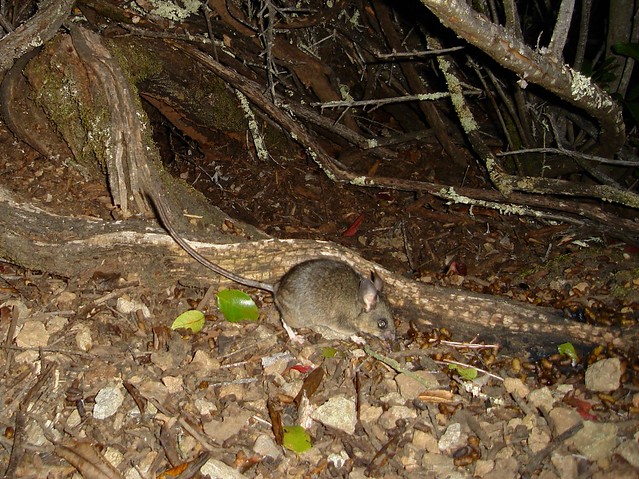
Same California mouse - note the long tail and big body
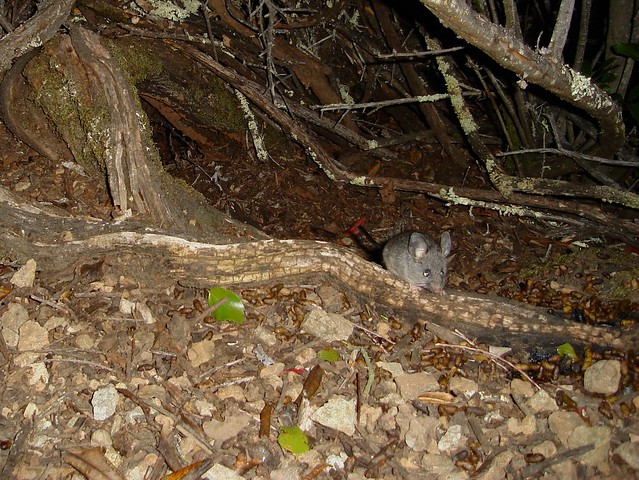
Juvenile California mouse with almost all gray body
One nice thing about a fixed position camera - if the critters are roughly in the same spot in the shots, you can compare their relative size.

Deer mouse, Peromyscus maniculatus. Key characters: small size; rust-brown body with stark transition to white chest and throat; smaller ears; wide eye set; tail that's the same length as body and is sharply top-bottom bi-colored
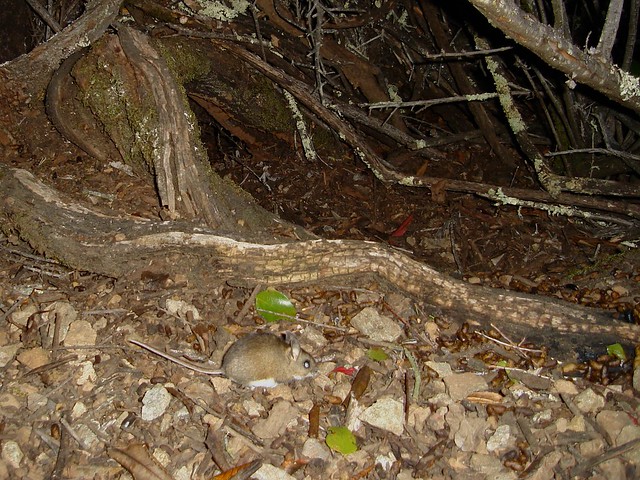
Same deer mouse - you can really see the rustiness and body-length bi-colored tail
You might think that the mice would be competing for the same foods, and thus - why doesn't the woodrat chase them off? It seems that between their size differences, and the mouse preference for insects, they're limited competition (dusky-footers don't eat crawlies).

Pinyon mouse, Peromyscus truei. Key characters: medium size; gray-brown body with buffy stripe on side and cheek; larger ears; larger eyes; long bi-colored tail

Same pinyon mouse showing off the bi-colored tail and sizable ears and eyes
Bush bonsai and home building that helps hundreds.
Due to these amazing ecosystem engineering skills and willingness to take on tenants - and like beavers, prairie dogs and woodpeckers - dusky-footed woodrats are a keystone species. I.e., a species so relied upon by numerous other species, that loss and fluctuations can have drastic effects on those commensal species. Like pulling the keystone from an arch.
And, it appears, that the classy Lady Prunus is quite a keystone to life on Berry Lane.
Editor's Post-Note: here are 6 woodrat stories that included this post, in order:
- The Coast Packrats
- Battles Under the Bay Laurel
- The Ecotones
- Life on Berry Lane
- Living in the Sticks
- Hanging with Miss Moss
References:
- Camera Trap Codger - mucho verbal and blog post brilliance on woodrats
- Linsdale and Tevis, UCPress - The Dusky-footed Wood Rat
- Wikipedia - Keystone Species
- Numerous amazing papers by Marjorie D. Matocq, Museum of Vertebrate Zoology and Dept. of Interpretive Biology, UC Berkeley, and Dept. Biological Sciences, Idaho State University (and now University Nevada, Reno) - including the following:
- Reproductive success and effective population size in woodrats, Molecular Ecology
- Morphological and molecular analysis of a contact zone in the Neotoma fuscipes species complex, Journal of Mammalogy
- w/ Eileen A. Lacy - Philopatry, kin clusters, and genetic relatedness in a population of woodrats, Behavioral Ecology
- Roberta Fargo, William F. Laudenslayer, Jr., USDA Forest Service - Are house counts reliable estimators of dusky-footed woodrat population size?, Transactions of the Wildlife Society
- Howard F. Sakai, Barry R. Noon, US Forest Service - Between habitat movement of dusky-footed woodrats and vulnerability to predation, Journal of Wildlife Management
- The American Society of Mammalogists, Nov 1991, No. 386 - Neotoma fuscipes
- Dr. C. Hart Merriam - Abstract of a study of the American wood rats, with descriptions of fourteen new species and subspecies of the genus Neotoma, Proceedings of the Biological Society of Washington
- E. W. Jameson, Jr., and Hans J. Peeters, UCPress - Mammals of California
- Smithsonian National Museum of Natural History - Neotoma fuscipes
- Wikipedia - Neotoma fuscipes
- Nature of a Man (this blog) - The Ecotones
- Nature of a Man (this blog) - Battles Under the Bay Laurel
- Nature of a Man (this blog) - The Coast Packrats

All those different types of mices. I'm coming back next time I am trying to sort them out. Quite fun to see the woodrat carrying around branches.
ReplyDeleteGreat post! I'm keeping my eyes peeled for woodrat pruned shrubbery from now on out!
ReplyDeleteOoh, interesting stuff. Reminds me of when I lived in Forest Service housing and deer mice had the run of the place at night. One had her babies in my underwear drawer!
ReplyDeleteSo these guys are pruners, eh? That may explain why some of my manzanitas and coffeeberries keep getting some of their lower, more 'tender' branches clipped now and then. And all along I had been blaming the bunnies. Mea culpa, bunnies!
ReplyDelete